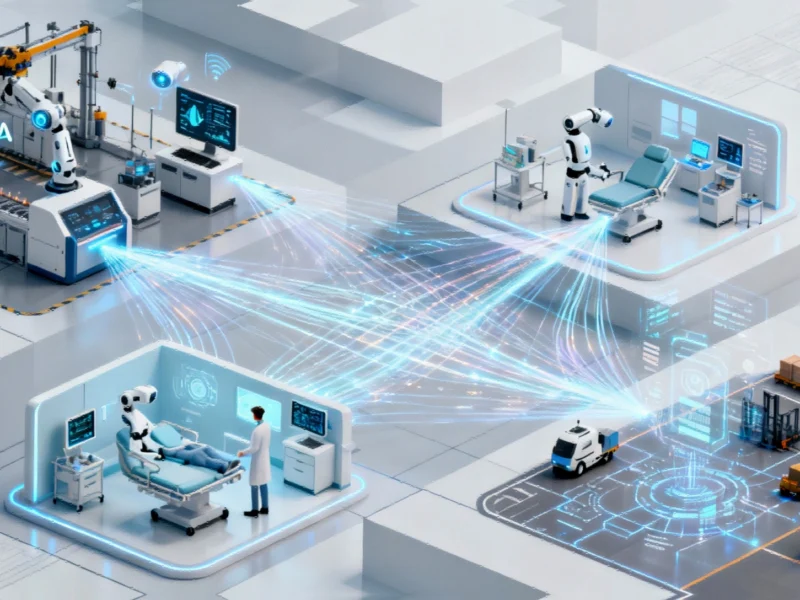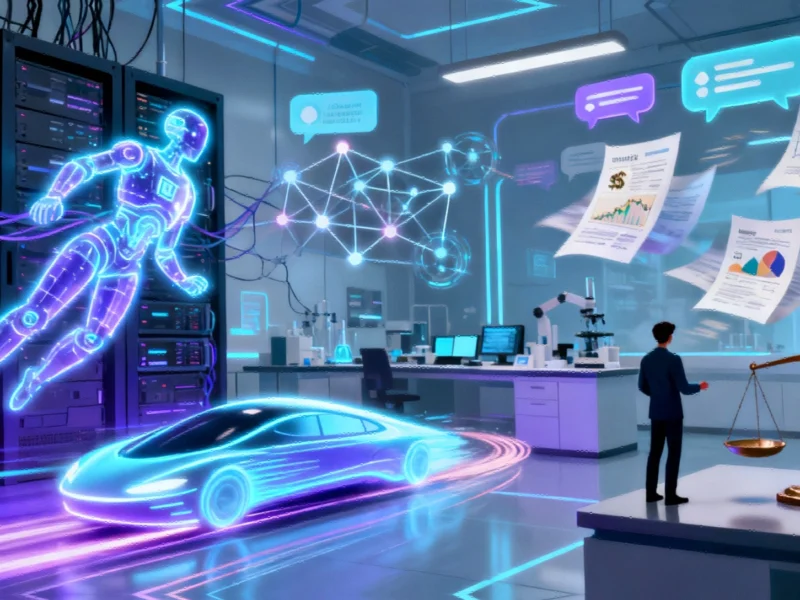The corporate landscape is witnessing a fundamental shift as artificial intelligence transitions from digital interfaces to tangible, real-world applications that are reshaping industrial operations. While AI has already revolutionized data analytics and automation, physical AI represents the next evolutionary phase—embedding intelligence directly into machinery, robotics, and operational systems that power our daily economic activities.
According to insights from C-suite leaders charting the course for physical AI integration, this transition requires fundamentally different strategic approaches compared to traditional digital AI implementations. Manufacturing facilities are now deploying sensors and AI-driven analytics to predict maintenance needs before equipment failures occur, while healthcare institutions are implementing smart diagnostic systems that accelerate detection and personalize treatment protocols.
The implications extend across global supply chains, where intelligent networks are dramatically improving efficiency while simultaneously reducing waste and advancing sustainability goals. The result transcends incremental improvement—organizations are building safer workplaces, delivering more reliable products, and establishing stronger customer trust through consistently superior outcomes.
The Scaling Imperative: Moving Beyond Pilot Programs
While many organizations have successfully implemented physical AI pilot programs, the true challenge lies in scaling these implementations to drive sustainable growth. Piloting typically involves identifying specific workflows where embedded intelligence can deliver immediate gains—whether through supply chain optimization, workforce productivity enhancement, or enabling entirely new service offerings.
Scaling demands substantial investment in infrastructure, comprehensive data collection systems, and workforce transformation programs. This transition is particularly evident in sectors like healthcare, where physicians are increasingly partnering with AI for improved patient outcomes, creating new operational models that blend human expertise with machine precision.
Data Infrastructure: The Foundation for Physical AI Success
Physical AI systems depend entirely on high-quality, secure, and accessible data to perform effectively. Unlike digital AI applications that can function with imperfect data, physical systems operating in real-world environments require exceptionally reliable data inputs to ensure safety and performance.
Businesses must establish robust data governance frameworks supported by comprehensive cybersecurity protocols that protect data integrity throughout the system lifecycle. This foundation enables physical AI to perform tasks more safely and effectively, allowing organizations to capitalize on technological benefits while systematically eliminating associated risks. The computational demands of these systems are driving innovations in processing power, as evidenced by recent chip developments delivering performance gains across multiple applications.
Regulatory Compliance and Risk Management
The transition from digital to physical AI introduces complex regulatory considerations that organizations cannot overlook. As leaders integrate robotics and autonomous systems into their operations, they must address human privacy rights, establish new safety and security protocols, and evaluate additional insurance requirements before deployment.
These considerations are particularly crucial in industrial settings, where the consequences of system failures can be significant. A comprehensive risk management strategy must account for operational safety, data protection, and regulatory compliance across all jurisdictions where physical AI systems operate. The manufacturing sector offers compelling examples of successful implementation, with companies like GE Aerospace demonstrating how technological adoption can drive substantial business value.
Workforce Transformation and Human-Machine Collaboration
Integrating physical AI into business operations creates both challenges and opportunities for workforce development. The technology demands that employees develop new skill sets to collaborate effectively with intelligent systems, while also raising important questions about how organizational roles must adapt.
The true value of physical AI lies in its capacity to enhance human capabilities rather than replace them. When organizations provide teams with the knowledge and resources to understand these systems, employees can collaborate directly with technology to execute complex tasks more effectively. This human-centered approach is reflected in how progressive organizations maintain their core mission while embracing technological innovation.
Infrastructure Requirements for Scalable Deployment
Physical AI applications generate substantial computational demands that require advanced infrastructure solutions. The growing need for efficient heat management in high-performance computing environments has made liquid cooling an essential requirement for many industrial AI applications. Similarly, international trade dynamics are influencing technology adoption strategies, as seen in how the recent US-Japan tariff agreement is reshaping business approaches to technology procurement.
Organizations must evaluate their infrastructure readiness across multiple dimensions—computational capacity, energy efficiency, connectivity, and physical space—to support scalable physical AI deployments. This comprehensive approach ensures that technological investments deliver sustainable returns rather than creating operational bottlenecks.
Strategic Implementation Framework
Successful physical AI adoption requires a structured approach that balances innovation with operational stability. Leadership teams should focus on identifying priority use cases that align with core business objectives, establishing rapid testing and learning cycles, and building governance frameworks that maintain accountability throughout the implementation process.
Organizations that master this balance won’t merely adapt to the future of work—they will actively define it. Physical AI offers more than operational efficiency; it represents an opportunity to set the pace of global innovation while creating tangible value for stakeholders across the ecosystem. The time for strategic action is now, as early adopters are already establishing competitive advantages that will shape industry dynamics for years to come.
Based on reporting by {‘uri’: ‘fortune.com’, ‘dataType’: ‘news’, ‘title’: ‘Fortune’, ‘description’: ‘Unrivaled access, premier storytelling, and the best of business since 1930.’, ‘location’: {‘type’: ‘place’, ‘geoNamesId’: ‘5128581’, ‘label’: {‘eng’: ‘New York City’}, ‘population’: 8175133, ‘lat’: 40.71427, ‘long’: -74.00597, ‘country’: {‘type’: ‘country’, ‘geoNamesId’: ‘6252001’, ‘label’: {‘eng’: ‘United States’}, ‘population’: 310232863, ‘lat’: 39.76, ‘long’: -98.5, ‘area’: 9629091, ‘continent’: ‘Noth America’}}, ‘locationValidated’: False, ‘ranking’: {‘importanceRank’: 213198, ‘alexaGlobalRank’: 5974, ‘alexaCountryRank’: 2699}}. This article aggregates information from publicly available sources. All trademarks and copyrights belong to their respective owners.



